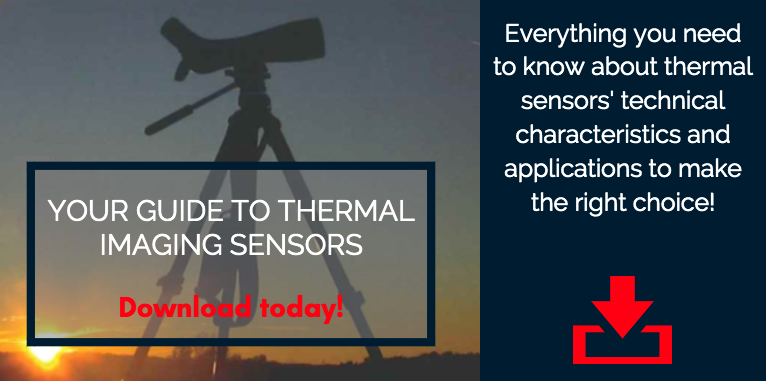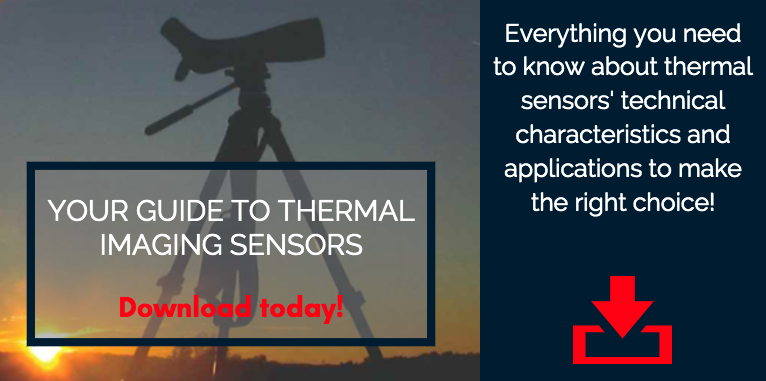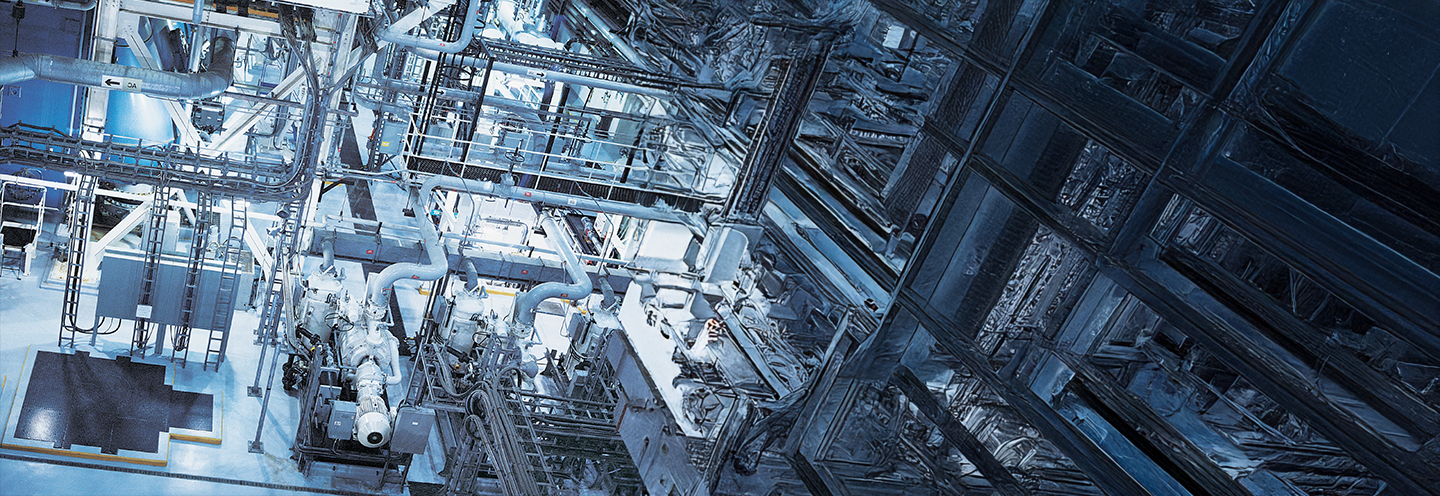Surveillance and security are major issues for industrial companies. Selecting the best technology and equipment is becoming increasingly strategic. Today’s surveillance camera manufacturers are making advances in visible detection (daytime vision) and, crucially, in thermal detection, a technology that can “see” the heat emitted by objects, regardless of the available light.
Here is what we know about the two technologies—and their advantages and disadvantages.
1- Visible and thermal detection technologies are constantly progressing
Today’s visible-light cameras are highly advanced. They can display images in real time and record them. And, if the cameras are connected to the appropriate equipment, images can be monitored remotely. Visible-light cameras are common in both civil and military applications a wide range of uses from outdoor activities to surveillance.
Thermal imaging captures infrared radiation to detect sources of heat. Therefore, it does not require any additional sources of light. This makes thermal imaging the technology of choice for military, defense, surveillance, and new leisure activities.
However, each technology has its advantages and disadvantages.
2-Visible light
Advantages
- A relatively low sticker price.
Because they are so widely used, visible-light cameras are less expensive to purchase than thermal cameras. Plus, the technology is more mature and easier to integrate and use than thermal imaging.
- Very good daytime image quality.
Visible-light cameras provide perfectly clear images during the day. The images displayed are pretty much what a person looking at the scene would see. Objects can be identified quickly and easily.
Disadvantages
- Images cannot be captured at night.
The main disadvantage of visible-light cameras is that they cannot capture images at night or in low light (at dusk or dawn, in fog, etc.). Without an additional light source, visible-light cameras cannot produce images in these conditions.
- Higher costs due to the additional lighting required in some conditions.
Visible-light cameras are only effective in full daylight. To work at night, LED lighting must be used with the cameras. Although LEDs do not consume a huge amount of energy, the additional lighting does require maintenance.
- Significant light pollution.
When visible-light cameras are used at night with LED lamps, they create significant light pollution that can be a concern for the people in the immediate vicinity of the cameras.
- More obtrusive cameras.
Visible-light cameras are easier to pick out than thermal cameras. Their positions are more obvious and their viewing angles can be more easily avoided than those of thermal cameras.

3-Thermal
Advantages
- Simple, efficient, and discreet surveillance.
Thermal imaging does not require any additional lighting. Only the camera itself is required. This means that thermal cameras can be installed very discreetly while remaining highly effective. This makes thermal cameras the ideal choice for surveillance and defense applications.
- Effective during the day and at night.
Because they generate very-high-contrast images, thermal cameras are just as effective at night as they are during the day. The amount of daylight as no impact on the quality of the images obtained. Thermal cameras also offer a longer viewing range than visible-light cameras. Fog and outdoor lighting do not affect the images. In other words, performance is guaranteed in a variety of conditions.
- High performance in all weather and air conditions (rain, fog, snow, smoke).
Here again, thermal cameras are not affected by weather or air conditions and consistently deliver clear, high-quality images.
- Low maintenance for lower total cost of ownership.
Unlike visible-light cameras, thermal cameras generate virtually no maintenance costs. While the initial purchase price is often higher, over time, thermal cameras are a more cost-effective solution than visible-light cameras.
- Motion and human activity detection.
Thermal imaging cameras can detect motion over a very long range. This means that motion or the presence of an individual can be detected without revealing the identity of the person detected.
- Protection of privacy.
Because thermal imaging cameras can detect an individual without identifying them, they protect people’s privacy. This is a very desirable capability for surveillance applications, for example, where privacy-protection standards are high.
- Fewer false alarms.
Thermal cameras can produce sharp, accurate images, which means fewer false alarms. They can clearly differentiate an animal, for example, from an intruder.
Disadvantages
- Higher sticker price.
Thermal cameras are advanced devices built using complicated components, so their purchase prices are higher than those of visible-light cameras. Thermal cameras’ optics and detection systems are not as widely used as those of visible-light cameras. These components are more expensive and will increase the initial cost.
- Thermal images cannot be captured through certain materials like water and glass.
Unlike visible light, infrared radiation cannot go through water or glass. Infrared radiation is reflected off of glass, with the glass acting like a mirror. This is a major disadvantage for uses like capturing images of individuals in cars, for example.
- Undesirable individuals are detected but not identified.
Depending on the use, this can be an advantage or a disadvantage. For military and defense surveillance, for instance, being able to identify a potential intruder or other malicious individual can be useful. Thermal cameras cannot identify individuals because infrared radiation does not create detailed enough images.
The choice between visible-light and thermal cameras will often come down to how the camera will be used and the available budget. However, thermal imaging technology is progressing and becoming more commonly used. As the technology becomes easier to integrate and use it will become a part of our everyday lives. Thermal camera purchase prices are expected to come down, making them a practical and high-performance alternative to visible-light cameras.
If you would like to learn more about the thermal image sensors and their technical characteristics, download our free, practical guide to find out everything you need to know to use the technology.












